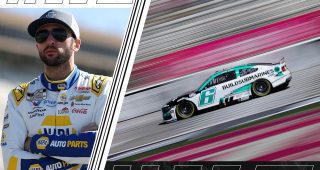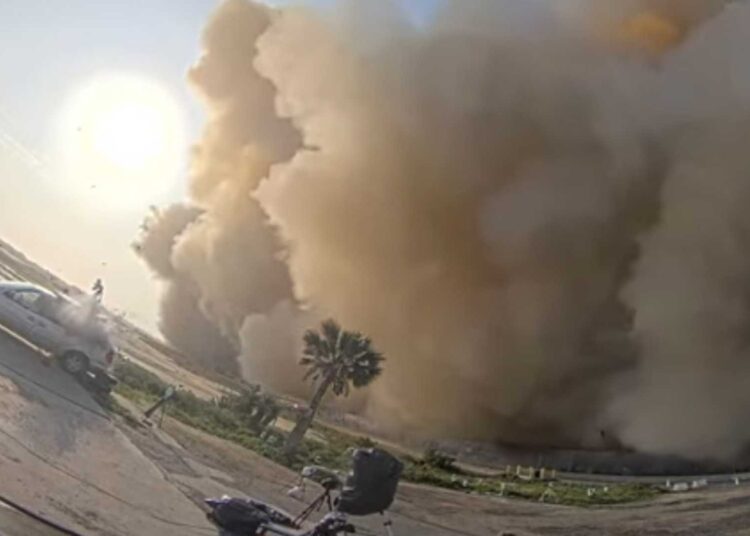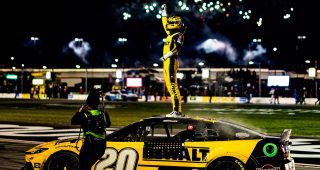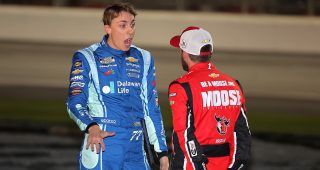Earlier today, the most powerful rocket ever created launched from south Texas. We’re talking about the orbital test flight of SpaceX’s Starship, mounted atop the Super Heavy booster for its first trip to space. Spoiler alert – it didn’t end well. Things didn’t go well for this Dodge Caravan parked near the pad, either. But at least it still exists.
We have LabPadre to thank for this very cool look at the launch. Cameras are positioned close to the pad, and we have the video above set to start with liftoff. Note the minivan on the left, which allegedly belongs to the Nasaspaceflight.com website. Presumably, it’s parked there to record footage but as the video here shows, it collected far more than just visuals of the launch.
10 seconds after the Super Heavy ignites we begin seeing debris landing in the dirt lot. That’s when the big tamale hits the Dodge; it appears to be either a rock or possibly a chunk of concrete the size of a watermelon, impacting the van’s rear window with enough force to actually rock the entire vehicle. We see the window shatter, and it appears the chunk of debris also breaks up. We have no idea of the speed at impact, but with 16 million pounds of thrust literally blasting a crater in the background, we’ll go out on a limb and say it was going fast.
That’s not the only impact on the poor van, either. For the next several seconds we see all kinds of debris raining down everywhere, and then the dust cloud arrives to envelop everything nearby. When the dust clears, nearly all the camera tripods are knocked over and we can see more damage to the Caravan’s windows. We hear that the launch actually caused quite a bit of damage to the SpaceX pad, which didn’t have any flame diverter structure in place.
Of course, Starship and the Super Heavy suffered far more damage and by that, we mean total damage. Approximately four minutes into the flight the rocket was manually destroyed by controllers on the ground after Starship failed to separate from the booster. It reached an altitude of approximately 130,000 feet, well short of making it to space.
If things had gone according to plan, Starship would’ve continued for another six minutes into low space, making nearly one full trip around the planet before reentering and crashing into the Pacific Ocean. The booster was slated for a similar fate, making a hard landing in the Gulf of Mexico.
If the van still runs, we hope it’s parked near the next SpaceX attempt to get Starship into orbit. The Caravan has certainly earned all its battle scars after this close encounter.
Read the full article here
























